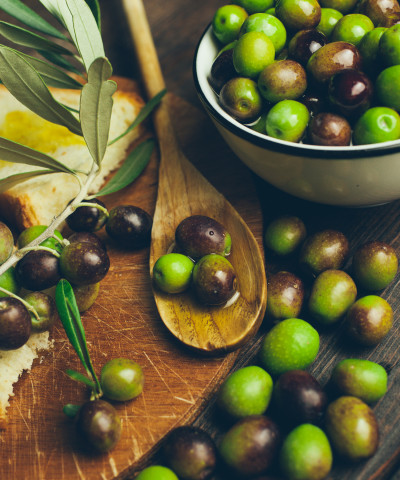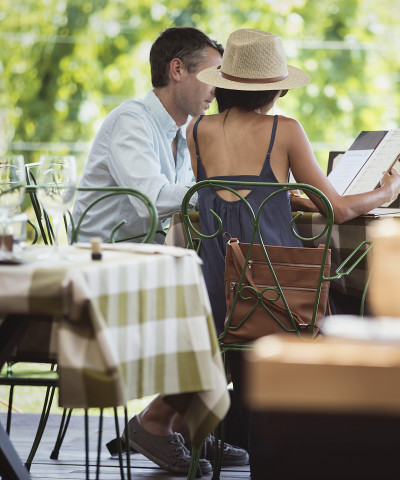The good weather in Florence
The sights, the smells and the itineraries of spring
Florence, already in his name, embodies the spirit of spring. In ancient times it was known as Florentia (city founded by the Romans just in the spring of 59 BC), the "city that flourishes" and whose own celebrations coincided with the advent of spring and the celebration of the goddess Flora.
No coincidence that the coat of arms of Florence is a flower, the red that comes from the Florentine lily white widespread in the area. The symbolism and meaning of the name remind us how much the city is linked to spring and what its places , parks, gardens and views rifioriscano and color the new blood during the season. For those who are in town this time of year , we offer a rich itinerary to follow and enjoy with eyes, caressed by a warm sun. Let's start from the gardens and parks , real green areas scattered around the city. Already in the historic heart of Florence if they are different .
Boboli Garden is one of the greatest examples of historic gardens in Italy, connected with the Pitti Palace and the Forte Belvedere. The garden , which welcomes more than 800,000 visitors each year , is remarkable not only for its historical and landscape for its collection of sculptures, ranging from Roman antiquity to the sixteenth and seventeenth centuries.
Bardini Garden: extends around the homonymous villa in the hills south of the city , not far from Forte Belvedere in from the Boboli Gardens, a large part of the park is visible from the Piazzale Michelangelo. Both the park and the villa was opened to the public in June 2007 after a long restoration work that has brought the entire complex to its former glory.
Fortezza Gardens: also known as the Gascone, located in a very central location of the city and urban transport, are located on the east side of the Fortezza da Basso, one of the bastions of the fort and lanes of Ring Road, surrounded for the most part by Filippo Strozzi avenue. They were designed by Giuseppe Poggi in the context of rehabilitation when Florence was capital of Italy.
Torrigiani Garden: this is a large park inside the walls of Florence, in excellent condition and is a typical example of romantic style that marked the beginning of the nineteenth century gardens. Inside you will find among other things also the Grotta di Merlino, the Gymnasium, and the Torrino.
Rose Garden: is a lovely park in the Oltrarno area below the Piazzale Michelangelo to the west , in Viale Giuseppe Poggi.
Gherardesca Garden: is the largest private garden in the historical center of Florence, and the main entrance on Piazzale Donatello. In front of it there is the Palazzo della Gherardesca.
Giardino Corsini: it is part of the palace complex Corsini al Prato (via il Prato, 58). Once a year, in May, the exhibition features artists and craftsmen at Craft Palace. Numerous distinguished guests were the palace by Frederick IV of Denmark to the Prince of Wales Charles Edward Stuart, queens Victoria of England and Margaret of Savoy.
These are flanked by parks and gardens, some places in the peripheral areas of the city but no less beautiful. Come to orde...
Parco delle Cascine: also known more commonly Le Cascine, with its 160 hectares is the largest public park in Florence; starts from the current Piazza Vittorio Veneto to get up under the bridge all'Indiano naturally bounded by the River Arno from the stream Mugnone and the channel Macinante. Very popular sports venue has many sports facilities including tennis courts, soccer fields, a velodrome, a shooting, the archery, swimming pools and two racetracks. In addition to bars and nightclubs, houses the memorial to the Indian prince Rajaram Chuttraputti, the bronze statue of King Vittorio Emanuele II on horseback, the Pyramid of the Cascine, the amphitheater and the Military Aviation School Giulio Douhet .
Bobolino Garden: located just outside, in the Porta Romana and takes its name from the nearby Boboli Gardens which is a version on a smaller scale. It is a sloping garden , composed entirely of grassy slopes , stairways and yards of gravel that has some pretty green decoration, such as the seats embedded with flower beds, tubs and artificial caves. In the middle part of the garden lies Villa Cora , now turned into a luxury hotel, where he stayed the Empress Eugenie and the Russian composer Pyotr Ilyich Tchaikovsky.
Stibbert Garden: a romantic park, in the street , enlivened by the caves, the temples and fountains.
Horticultural Garden: is located in via Bolognese, in the north of Florence, which has hosted prestigious national exhibitions and shows. In addition to the Loggia Bondi, in the garden there is also a greenhouse in large iron and glass that had no precedent in Italy when it was built, the garden is also access to the garden of the gardens of Parnassus within which is housed in the Garden of righteous.
Garden of Simple: it is a section of the Natural History Museum of the University of Florence. Third oldest botanical garden in Italy, hosted seamless rare and exotic species since its founding in 1545.
Garden of Villa Favard: the Baroness Fiorella Favard made it a great center of culture that brought together intellectuals and artists. Today, it is a thriving and welcoming villa park which is home to the Luigi Cherubini Conservatory of Music.
The gardens and parks must be added the splendid views of Florence from the top . The wonderful natural terraces that are immediately catches one's eye changes the spring cityscape. Here are the most typical places :
Piazzale Michelangelo: is the most famous vantage point of the city panorama , created in 1858 by the architect Poggi on a hill just south of the historic center. The square enclosing copies of some important works of Michelangelo's David and the four allegories of the Medici Chapel of San Lorenzo all made of bronze. The view that you can admire from here embraces the heart of Florence. From Forte Belvedere to Santa Croce through the Arno river and the bridges of Florence in sequence, especially the Ponte Vecchio. Stand the Duomo, Palazzo Vecchio, the Bargello and the octagonal bell tower of the Badia Fiorentina, without forgetting opposed to the hills north of the city center with the Fiesole and Settignano. At Piazzale can be accessed by car along the tree-lined Viale Michelangelo, made in those years, or on foot going up the ramps of the monumental staircases said Poggi, Piazza Poggi in the district of San Niccolò.
Forte Belvedere: is one of the two "scenic fortresses" in Florence as well as a fine piece of architecture. The Forte Belvedere is located on the highest point of the hill of Boboli and is accessed from the coast of San Giorgio, Via Belvedere or via San Leonardo. It was built at the end of '500 by Ferdinando I de 'Medici, son of Cosimo I.
Terrace of Fiesole: from here you can enjoy breathtaking views of the city. The terrace is in the public gardens, under the neo-Gothic Villa San Michele offers one of the largest and most impressive of Florence.















